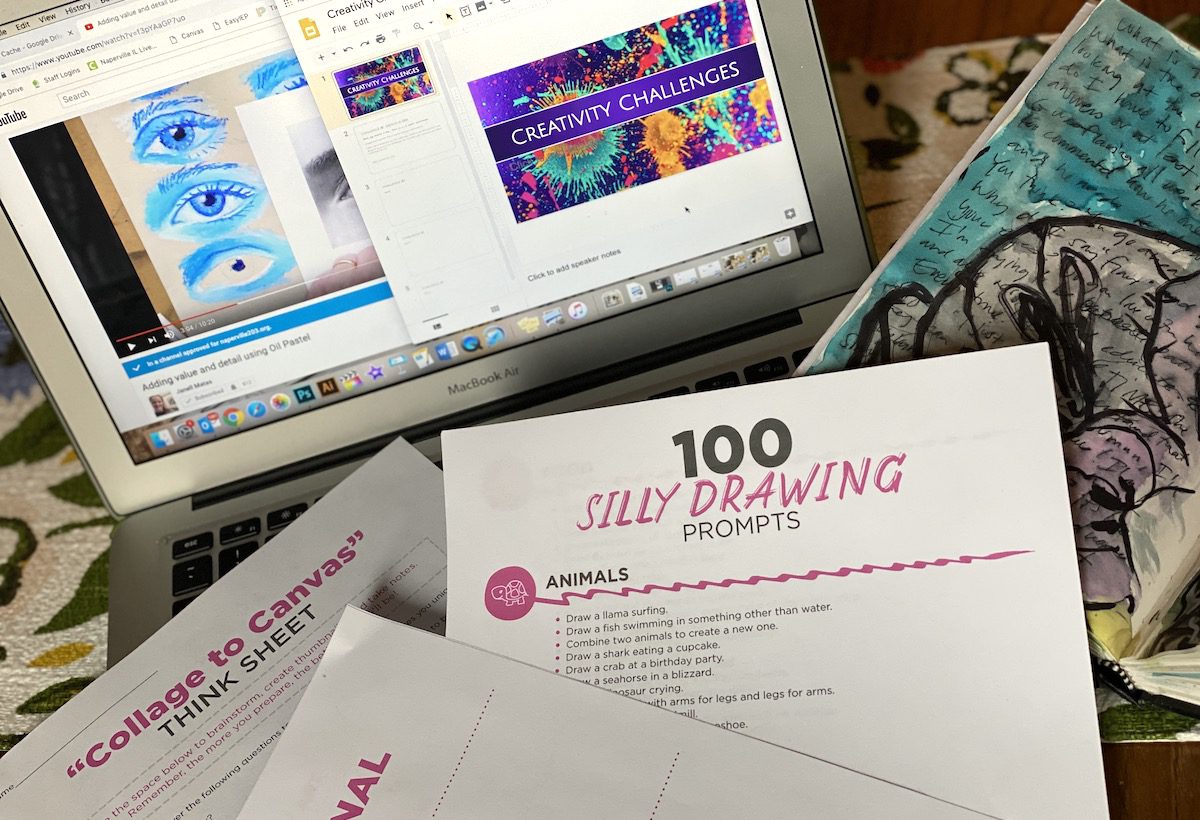Art Education and the Coronavirus (COVID-19)
There are a lot of reasons a school might face a temporary closure. From emergency snow days to preventative cleaning to stop the spread of a *certain* virus, there are days when learning will be disrupted. You may be given only a few days’ notice or find out the morning of. When asked to prepare lessons and materials for remote learning, it can be especially tricky for art teachers. Here are a few tips and ideas to help you prepare in case of a school closure.
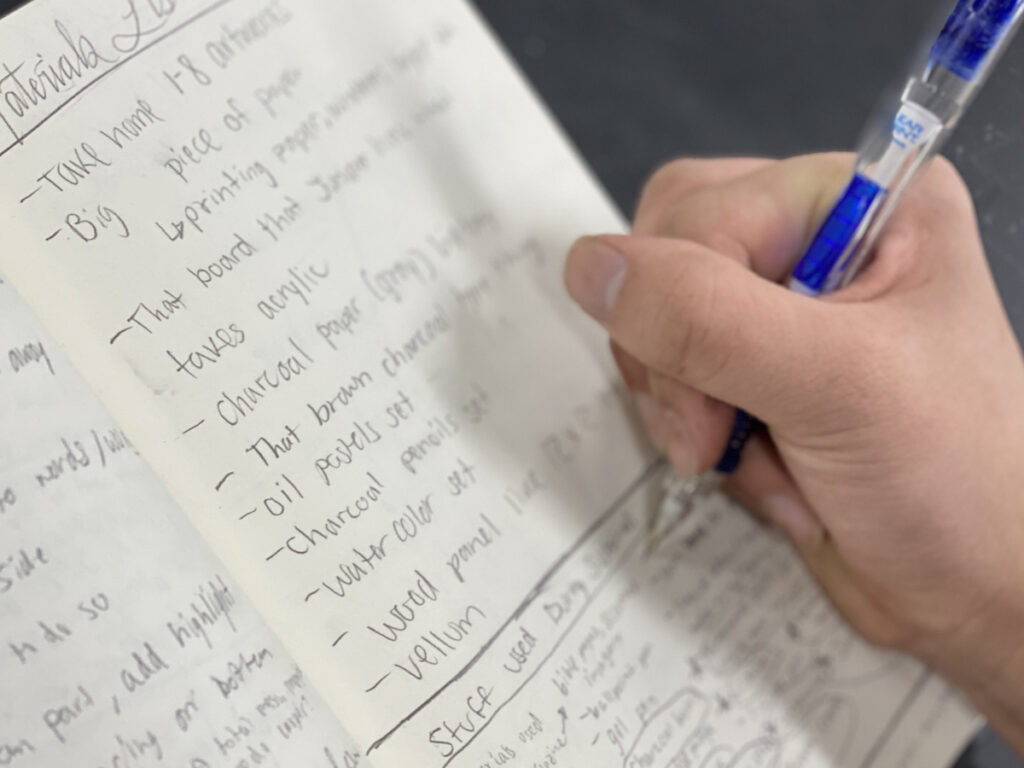
Preparing with Advance Notice
When you know in advance, it’s a little easier to pinpoint instructional needs. Preparing lessons is one thing, but prepping materials can be even more challenging. Here are a few tricks to help you prepare when you have some advance notice.
Brainstorm Materials Lists
In advanced classes or a Choice-Art setting, brainstorming lists of materials students might need is a great way to prepare for a longer period without classroom support. Coming up with materials that “could-be” leaves students unsure and unprepared. Try this quick brainstorming exercise to get students prepared.
The ultimate eLearning tool: FLEX Curriculum
While reviewing and reflecting on previous works, students have been developing, have them make the following lists:
- All materials/mediums they’ve used so far (oil pastel, acrylic paint, mixed media, pencil, etc.)
- Surfaces or structures used (cardboard, stretched canvas, wire, etc.)
- Adhesives or fasteners used but not seen (contact cement, liquid glue, masking tape, etc.)
- Materials they could foresee wanting to use or explore in their next artworks
Have them ask, “What have I overlooked? Given what I see, what else could I see myself trying or using?”
Then, have students categorize their materials.
- Star the items they know they have at home (sketchbook, newspaper, ballpoint pen, glue stick, etc.)
- Underline the items that are possible to ask for from school/teacher (color pencil set, wire and pliers, specialty paper, etc.)
- Circle the items that could be purchased on their own (liquid glue, watercolors, embroidery floss, etc.)
- Highlight in yellow the items that cannot be purchased or accessed at home (Photoshop, DSLR, digital drawing tablet, etc.)
You can combine the lists students create and decide as a department what items students might be able to check out from you and what items you can come up with for alternatives (such as online apps like Pixlr instead of Photoshop). With a little more notice on your school closing, students can make their own supply boxes and fill out a materials check-out sheet from you.
To-Go Boxes
When teaching a media-specific course, you might be able to prepare “to-go boxes.” For example, watercolor palettes and brush kits can be made up in small bundles. Think smaller in scale by cutting quality paper or boards to help you teach a unit on watercolor.
If your students won’t have internet access, you could print out your lesson along with a few technique resource sheets to toss in the box for support. Small resealable bags with a range of materials such as one charcoal stick, three pencil hardnesses, and some chalk and oil pastels allow students to choose between a few drawing materials when exploring ideas on their own.
Remember that large stash of magazines you have been hoarding? Pack a magazine, a pair of scissors, and some glue for students to practice composition, precision cutting, and layering with collage techniques. These kits can also be stored for ready-use on field trips or long breaks when students want to create on the go.
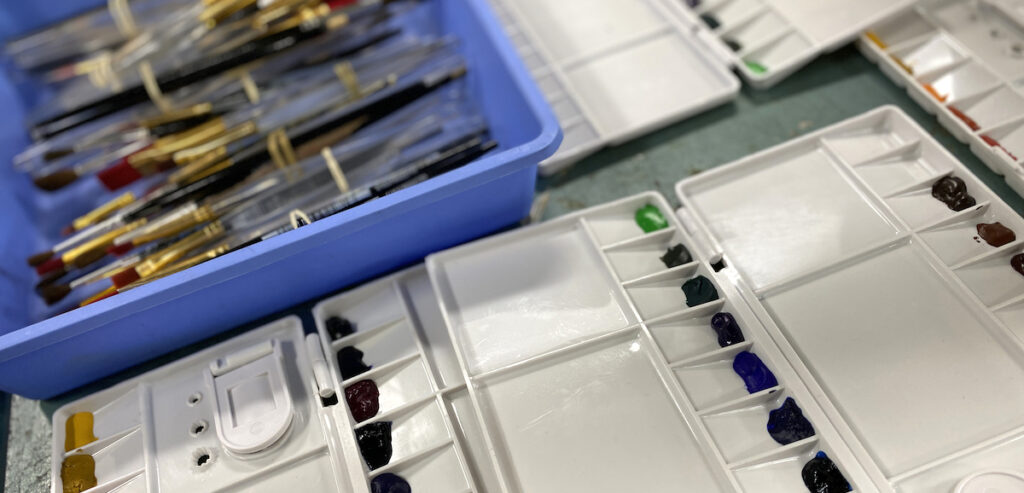
Last-Minute Preparation
When you find out the night before or morning of, it’s not so easy to plan for lessons on the go. We don’t always know what resources our students will have access to, so it’s important to consider many different options for all students.
Create a Creativity Cache
Most students have sketchbooks or at least paper and pencil available to them. When in doubt, create daily or weekly challenges to exercise creative skills. Creating a slide deck of daily creativity challenges will continue to push students to develop ideas that they can later apply to specific media when back in the classroom.
Consider design thinking challenges, creative constraints, exercises to generate ideas or hone a specific inquiry, and maybe toss in a few prompts left open for creative interpretation. Provide lists of scavenger hunts for students to photograph with their phones. Getting students to think outside the box can spark some unique and intriguing ideas for when they can come back to class. You can also keep these in your pocket for any time you’d like to exercise creative thinking.
Explore, Experiment, or Play
Create a list of non-traditional art materials and tools you or students might find in their homes or neighborhoods. For paints, why not try creating with a spoon and some coffee or tea? When considering a sculpture, what about creating from materials such as newspaper, cardboard, or old t-shirts from their closet? Create a design challenge using all recycled materials, consider unusual substrates such as drawing on an old bedsheet, or create a game design from a once-loved board game.
Try flipping the exploration—ask students to explore as many different ways they can imagine creating by using something readily available like dirt or bread. How could they make a sculpture, a wearable costume, and a drawing using only spaghetti noodles and sauce? Jotting down even seemingly undoable ideas keeps students engaged in creative thinking and playful experimentation.
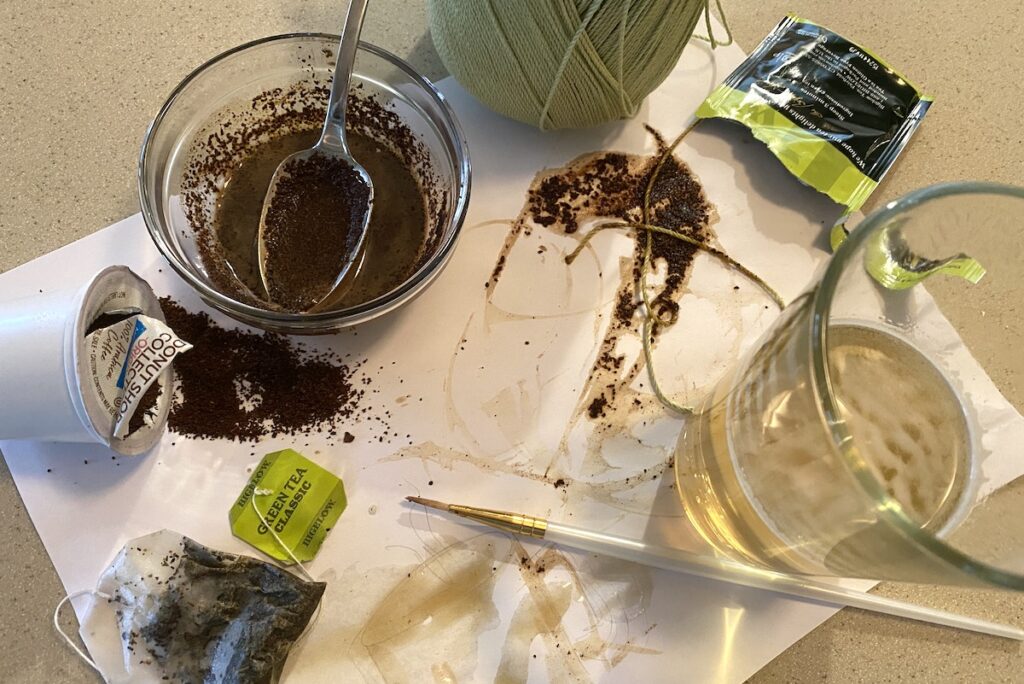
Technology Access at Home
Flip Your Classroom
If all of your students have access to the internet and a device, it’s a lot easier to deliver instruction and collect evidence of learning. With technology, we can seamlessly transition instruction through video tutorials, discussion boards, and other digital resources, much like a flipped-classroom approach. There are so many great YouTube resources available, along with AOEU’s FLEX Curriculum, to help supplement learning so you won’t have to reinvent the wheel.
Student-Created Digital Resources
Digital student-created resources are a great way for students to engage in their remote learning process and help you bulk up your curriculum for future needs. Even with limited access, students might be able to research artists, topics, or media they are interested in pursuing and jot those ideas down in their sketchbooks.
Online Critique
Through an online hangout or chat, students engage in conversation or critique to further their artmaking while stuck at home. A discussion board to post ideas, introduce concepts, and engage in discourse can hold students accountable and engaged in continuing their creative education.
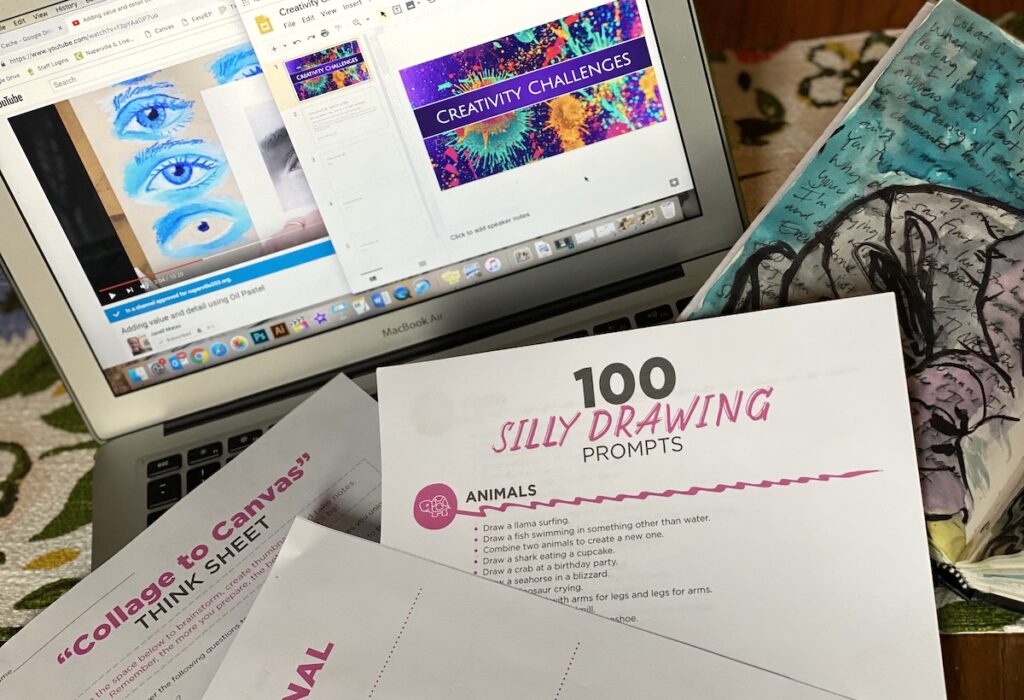
Need more information? Learn more here!
While these ideas are a jumping-off point, it’s important to consider equitable resources for all students. Decide what essential standards your students will need to come away with, whether learning happens in the classroom or out. Stay flexible with whatever outcomes occur and be responsive to students’ needs just as if they were sitting at their desks. Ultimately, it will be up to you to decide what learning must occur to prepare your students for when they return to the classroom, and what they can go without.
In what ways are you preparing for emergency closures?
What materials would you be able to provide to students? What materials do your students have access to at home?
What essential learning must take place during emergency closures, and what can you hold off with until learning continues in the classroom?
Magazine articles and podcasts are opinions of professional education contributors and do not necessarily represent the position of the Art of Education University (AOEU) or its academic offerings. Contributors use terms in the way they are most often talked about in the scope of their educational experiences.
